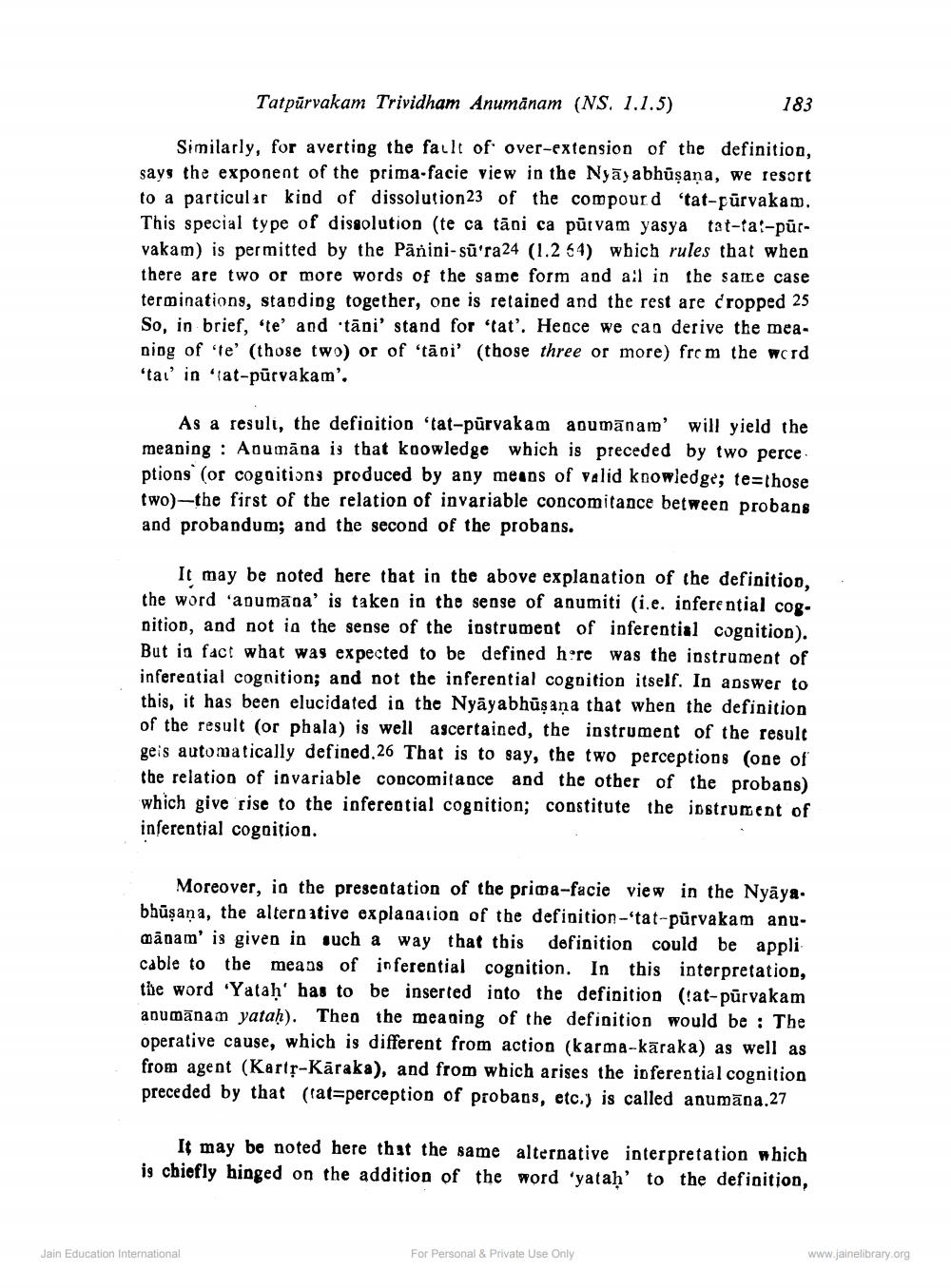________________
Tatpūrvakam Trividham Anumanam (NS. 1.1.5)
183
Similarly, for averting the fall of over-extension of the definition, says the exponent of the prima facie view in the Nyāyabhūşana, we resort to a particular kind of dissolution 23 of the compourd 'tat-pūrvakam. This special type of dissolution (te ca tāni ca pūt vam yasya tat-tai-pūrvakam) is permitted by the Pänini- sūdra 24 (1.2 54) which rules that when there are two or more words of the same form and ail in the satce case terminations, standing together, one is retained and the rest are cropped 25 So, in brief, 'te' and tāni' stand for 'tat'. Hence we can derive the meaning of 'te' (those two) or of 'toi' (those three or more) from the word 'tai' in 'tat-pūrvakam'.
As a resuli, the definition 'tat-pūrvakam apumānam' will yield the meaning : Anumāna is that koowledge which is preceded by two perce ptions (or cognitions produced by any means of valid knowledge; te=those two-the first of the relation of invariable concomitance between probans and probandum; and the second of the probans.
It may be noted here that in the above explanation of the definition, the word 'apumāoa' is taken in the sense of anumiti (i.e. inferential cog. nition, and not in the sense of the instrument of inferential cognition). But in fact what was expected to be defined höre was the instrument of inferential cognition; and not the inferential cogoition itself. In answer to this, it has been elucidated in the Nyāyabhūşaņa that when the definition of the result (or phala) is well ascertained, the instrument of the result geis automatically defined. 26 That is to say, the two perceptions (one of the relation of invariable concomitance and the other of the probans) which give rise to the inferential cognition; constitute the instrument of inserential cogoition.
Moreover, in the presentation of the prima-facie view in the Nyāya. bhūşaņa, the alternative explanation of the definition-tat-pūrvakam anumanam' is given in such a way that this definition could be appli cable to the means of inferential cognition. In this interpretation, the word 'Yatah' has to be inserted into the definition (tat-pūrvakam anumānam yataḥ). Then the meaning of the definition would be : The operative cause, which is different from action (karma-kāraka) as well as from agent (Kartr-Kāraka), and from which arises the inferential cognition preceded by that (at=perception of probans, etc.) is called anumāna.27
It may be noted here that the same alternative interpretation which is chiefly hinged on the addition of the word 'yataḥ' to the definition,
Jain Education International
For Personal & Private Use Only
www.jainelibrary.org




